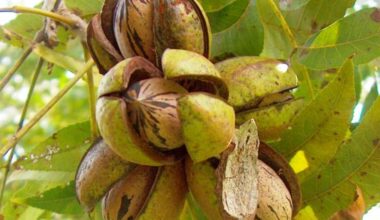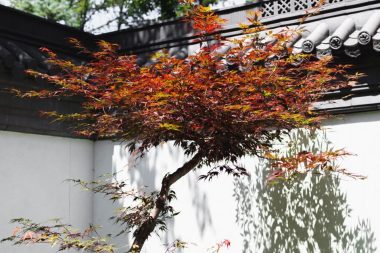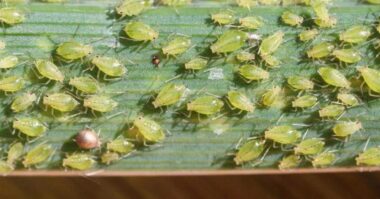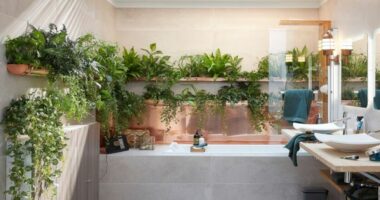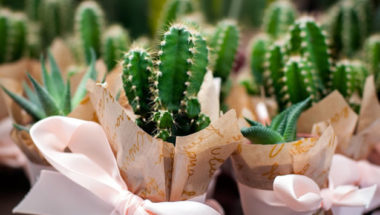Watering herbs is a very important aspect of growing them in pots. Many aromatic plants in nature are very resistant to dryness thanks to their ability to develop a deep root system to fetch water. In pots, you must water your aromatic plants regularly depending on the size and the pot, the weather, the season and the species. In spring, when they are growing, you should water them every 2 days or so.
To manage the watering of your aromatic plants, nothing is better than observing them. With a bit of practice, you will quickly notice that you need to let the soil dry slightly on the surface before watering again.
Be careful, however, not to let the root ball dry out too much, as it is difficult to re-wet it afterwards, especially if the substrate is rich in peat.
The use of undercuts under the pots is useful to avoid wetting the soil around them and to save some water, but for some plants that appreciate dry soils, it is better not to leave them constantly under the pots.
Contents
Water needs of aromatic plants in pots
We like to group aromatic and medicinal plants in the same space, whether in the garden or in pots, so that we have them all on hand when we need them. This calculation is not always the right one because, while some are true camel plants, others have much higher water requirements.
Volume of the pot, season and weather, type of variety… All these elements have consequences on the watering of aromatic plants. While in spring, it is recommended to water them every two days, in summer, watering should take place every day. When the cold weather returns, it is preferable to space out the watering.
The goal is to keep the soil fairly moist. If the soil starts to dry out on the surface, it should be watered again. But these are just recommendations and nothing beats observing your herbs to understand and manage the amount of water they require. In any case, be sure to use pots with holes to facilitate drainage and avoid water stagnation at the bottom.
When to water potted herbs?
Many aromatic plants are grown in pots, which greatly limits the available water reserve of the soil (substrate). It is therefore advisable to water much more regularly than for plants grown in the ground, without, however, suffocating the roots. Between two waterings, let the soil dry slightly on the surface, but not in depth; especially if the soil used is rich in peat and therefore difficult to rewet.
When to water aromatic plants?
- In spring and fall: it is preferable to water young annuals with tender leaves, such as basil, parsley, dill, coriander or chervil in the morning, so as not to make them too attractive to snails.
- In summer: it is advisable to water in the evening in order to avoid a too fast evaporation and a condensation which can support the development of the diseases.
Do not overwater your aromatic plants
Lavender, rosemary, thyme and laurel: Lamiaceae are particularly afraid of excess water, and as with houseplants, overwatering is harmful to potted aromatics. Many herbs are sun plants! However, there are exceptions:
- Parsley and musk chervil like part shade and richer soil;
- Lemon verbena, lemongrass, chives, stevia and mertensia maritima (or oyster plant) like cool but dry soils, so just slightly moist;
- Basil, Para cress and rhubarb (which is an aromatic plant) require a lot of water! So, wait between two waterings until the soil is well drained. And when transplanting, remember to put a pebble at the bottom of the pot, followed by 1 inch of gravel before the potting soil.
9 mistakes to avoid when growing herbs in pot
1. Don’t put all aromatic herbs in the same basket
The global name of “aromatic plants” hides in fact a rich and exciting reality: they are all different! Basil and parsley cannot be grown like thyme, bay leaves or rosemary. So don’t plant all your herbs in the same planter, because each of them (or almost) requires specific maintenance and soil.
To grow your herbs well, take into account their rusticity to know which exposure and watering to offer them: basil likes for example a classic soil like universal compost, fresh and humid, a half-shade exposure and regular fertilization; while thyme prefers a draining substrate like sand and pozzolan rather dry, full sun and almost no amendment.
Ask for information on the internet or in a garden center before choosing them because knowing them well and cultivating them according to their specific needs will allow you not only to create a magnificent aromatic garden, but also to see your plants blossom, and, in the end, to enjoy yourself…
2. Stick to classic herbs
The interesting thing about aromatic plants is that they offer a wide range of flavors, textures and scents. Some have a delicate taste like chives, others are sunny like thyme or rosemary, others still have a very pronounced, spicy flavor, like Para cress…
If you want to start growing herbs, a good tip is to start with a limited choice of five herbs (from the classic chives, sorrel, thyme, basil and parsley), and determine the optimal quantity for your needs. Then, once you’ve got the hang of it, gradually expand your collection with plants that are a little less traditional!
3. Don’t think about transplanting!
Did you know that most aromatic plants are sold at almost the same price, whether they are in seed packets or in cups? So reserve seedlings (especially warm seedlings such as parsley and basil, which are not so easy to succeed…) for the most experienced gardeners because growing seeds is more complex, and don’t hesitate to buy a young plant in a clump to replant and divide it.
4. Put your herbs systematically in the ground
Of course, you can sow or plant your aromatic plants in your flowerbeds, but take a few precautions: isolate mint in a large pot, as it is very invasive, and place it in the shade so that it does not burn.
You can also keep thyme, bay leaves and sage in pots, which you will bury in a bed for a perfect trompe-l’oeil effect. You will then just have to dig up the pots to be able to bring in these frosty perennials at the end of autumn, ideally in a winter garden where they will have enough sun without suffering from the cold or, on the contrary, from too much thermal shock. For those that you wish to place in the ground, mulching and a winter cover are on the agenda!
5. Insulate them automatically
If mint needs to be put aside in a pot, other aromatics can perfectly cohabit in the same planter: tarragon, sorrel, parsley, chives and coriander are interesting combinations, to be placed in a semi-shaded area with cool soil; as well as, in another planter, thyme, laurel and rosemary, as explained above, in a sunny spot.
6. Give the same fertilizer to all herbs
A potted plant needs to be fed, and herbs are usually quite greedy since we are talking about stimulating their regrowth after cutting them to eat them. But again, not all herbs need the same treatment:
- Thyme and laurel do not need much fertilizer;
- For those whose purpose is to grow leaves without promoting flowering, a fertilizer low in phosphorus is ideal;
- On the contrary, flowering aromatics need more potassium. During the vegetative period, give them a phosphorus-nitrogen-potassium fertilizer every two waterings, or even every watering (for parsley and basil for example);
- For Lamiaceae, a contribution at repotting is sufficient. In garden centers, balanced fertilizers 5.5.7, or universal fertilizer 6.6.6 are suitable, or an organic mineral fertilizer. And if the fertilizer is incorporated into the potting soil, avoid adding it for 3 weeks to a month before resuming a regular rhythm.
7. Neglecting their natural cycle…
Aromatics are plants that we expect to produce, and we would love to eat them all year round. Some last two to three years like chives or sorrel, but others, annuals (like basil, parsley or stevia (sugar plant)) and biennials like parsley, last only one year: it is their natural cycle!
8. Neglecting their maintenance, even if it is minimal
At the end of the summer or fall, cut back perennials by cutting off the dry stems, which will ensure that the plant has a good, compact habit. If you can’t repot a perennial, scratching the soil with a fork and putting new potting soil on top will give the plant a boost.
Some plants also need help to bloom again, like chives: when their flowers are damaged, pinch them to stimulate flowering.
9. Pass up opportunities to cook your herbs!
Once the crops are successful, it’s time to enjoy them! Jams and compotes with rhubarb, jellies or infusions with lemon verbena, cucumber salad with oyster plant, chicken with real lemongrass, fish with agastache, mint tea… Enjoy!

